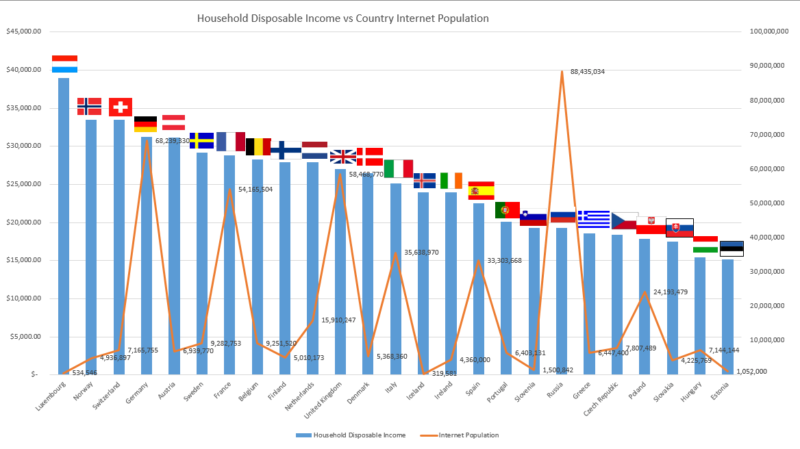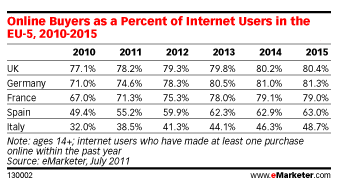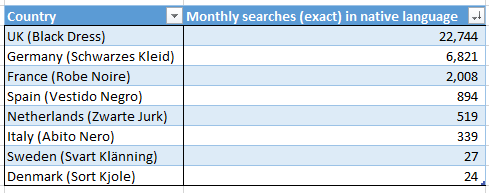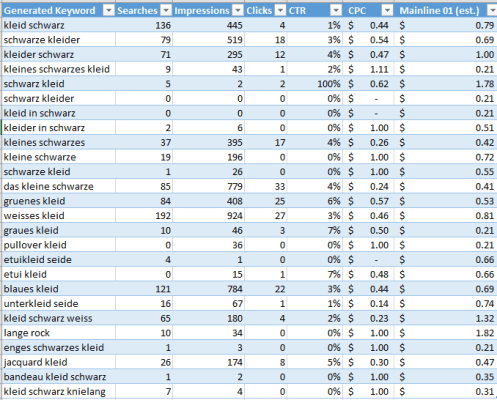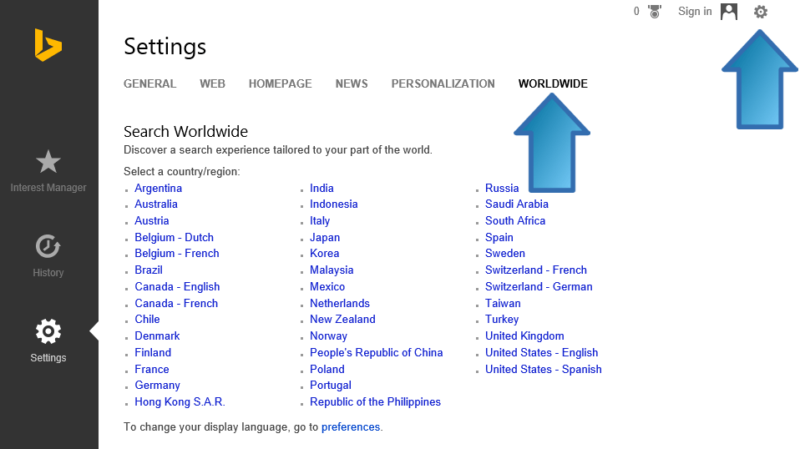The Cross-Border Series Part 2: Establishing A Search Marketing Strategy In Europe
In the second installment in his multipart series on capturing international visitors through paid search, Bing's Gabriel Kwakyi shares his insights for targeting European searchers.

For businesses around the world seeking growth, expanding to Europe is an excellent opportunity. Europeans, who number over 500 million (per collective official country estimates), have some of the world’s highest disposable household incomes (per an OECD index) and drive a massive regional e-commerce industry valued at EUR 200 billion and growing at just under 20% annually, per an Accenture US-EU cross border study.
The single most important fact to consider when developing a European marketing strategy is that Europeans should not be approached as a single market or customer type. While many European countries do share similarities, such as regulations and a common currency via the European Union, each country has its own unique culture forged through millennia of history.
Things To Consider When Formulating A European Business Strategy
There are many differences between Europe and the United States — cultural, economic and legal. Here are a few to keep in mind when developing a European business strategy and setting up your search campaigns.
The Basics
There are many different conventions — written and spoken — that exist for basic cultural elements, including:
- Date. In most European countries, the day is placed before the month — so, “July 21, 2015” would be written as “21 July 2015” or “21/7/2015.”
- Time. Many European countries use the 24-hour clock (e.g., 17:00, not 5:00 p.m.).
- Decimal marks. Important for pricing, most countries in Europe use a comma — not a period — to denote decimals (e.g., €19,99 instead of $19.99).
- Measurement. All European countries use the metric system (e.g., centimeters, not inches).
- Currency. Keep in mind that not all countries in Europe have adopted the Euro currency.

Image from iGlobalStores.com
Seasonality and purchasing habits also differ from country to country, particularly between northern and southern European countries. For example, according to Bing European Mobile Specialist Milka Kramer, “Spanish searchers tend to book travel last-minute in July/August, while UK searchers begin booking in January with activity peaking in April.”
Europeans also celebrate a wide diversity of holidays, both religious and national, across and even within countries, sometimes even observing the same holiday on different dates. Take Mother’s Day, which is widely celebrated in Europe but falls on a different day of the year across countries:
- Norway: Second Sunday of February
- Ireland & the UK: Fourth Sunday during the period of Lent
- Spain & Portugal: First Sunday of May
- Most European countries: Second Sunday of May
- Poland: The 26th of May
- France: Last Sunday of May (or first Sunday of June, depending on Pentecost)
Economic Factors
Another reason it’s not a good idea to apply a single strategy across Europe is that each country has a different economic climate that will affect your product’s optimal price. Using a single approach will price your products too high for some countries (producing lower conversion rates and inefficient spend) and too low for others (producing higher conversion rates but eating into your profit margins).
Your pricing across different countries will be affected by a variety of factors. You’ll need to consider taxes and duties — value added tax (VAT) rates vary across Europe and can range from 4.5% (Andorra) to 27% (Hungary) — as well as cost of living, disposable income, currency exchange rates, shipping costs and return rates, cost per customer acquisition and product scarcity.
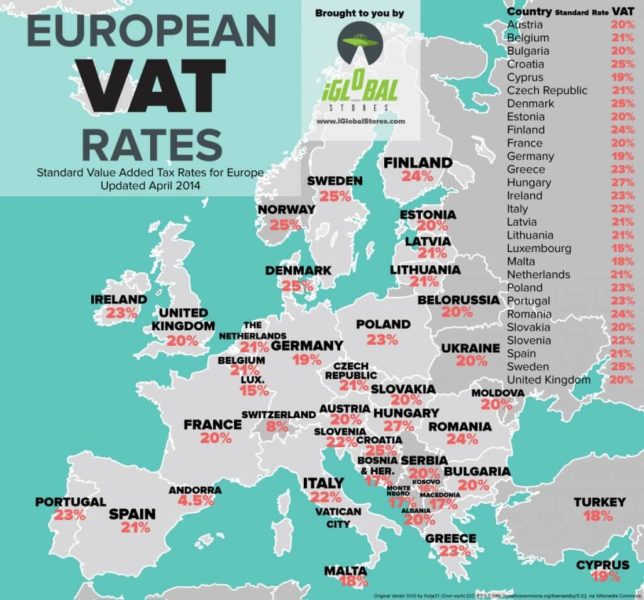
Image from iGlobalStores.com
Many European countries have high costs of living, yet cost of living varies greatly across the continent, and even within countries. Customers in Norway, for example, may be used to higher prices, while customers in Spain may balk at the same price for the same product.
To maximize your return on investment, you must take into account these different variables and pricing pressures when developing your product pricing strategy. To help manage this process, it’s a good idea to organize a database of each pricing variable by country, along with your cost of goods sold, so that you can easily determine what price ranges make sense. Also, to optimize your marketing yield, include as many relevant data points as possible, such as competitive presence and prices, referral rates, organic sales and repeat business.
Maintain this database as your data is updated to fine-tune your pricing model, and measure performance at different price points to learn where your success rates are highest.
Legal Factors
Some European countries have stricter laws and regulations than others surrounding issues such as user data collection, return policies and packaging/labeling.
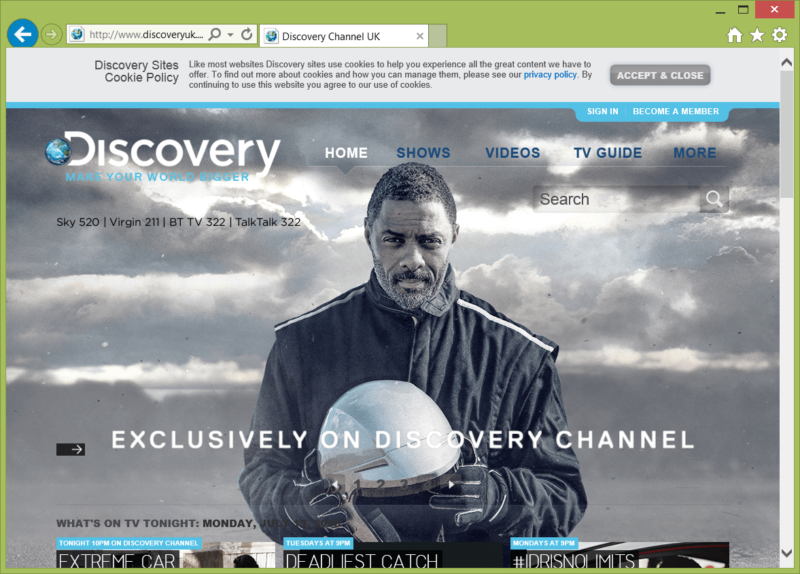
A cookie policy notice from Discovery’s UK website. [CLICK TO ENLARGE]
It’s important to ensure that your business abides by each applicable rule; refer to the European Commission website or the United States’ Export.gov website to help understand which regulations apply to your business, and how. Additionally, make sure that your ads comply with editorial rules, which differ by country for highly regulated industries like Trademark, Gambling and Pharmacy.
Internet Penetration Rates
Another consideration to keep in mind when establishing your European strategy is internet penetration rates. Some countries may have large populations but a low internet penetration rate, which lowers their total reachable population. While there are several examples of this dynamic, the most notable example is the UK, which has ~1 million fewer people than France, but ~4 million more internet users. See the data in this graph from an International Telecommunication Union study.
Language Expectations
While 51% of Europeans do understand English (per a European Commission study), many countries speak their own language or a mix of languages and dialects. (Switzerland has four official languages, and within Spain, the region of Catalonia speaks Catalan.)
“Some countries are mostly fine with [being marketed to in] English,” notes Massimo Guerrato, an online marketing expert and entrepreneur in Italy, “but others are used to having everything localized and translated, with even TV being ‘dubbed.'”
Even if your business is not ready to invest in translation and localization, you still have many options. For marketing in countries where English is not the official language, the Netherlands and Nordic countries (Norway, Denmark, Sweden and Finland) are your best bet. According to Jesper Riedel, Bing European Search Advertising Lead in Nordic Countries & Netherlands:
English proficiency is really high [in these countries]; according to the Education First English Proficiency Index, the best countries globally for English comprehension begin with Denmark, Netherlands, Sweden, Finland and Norway. Obviously, it’s always best to communicate in local language, and from an ad perspective you often have to. But as an e-business you can direct users to an English language page and still see excellent conversions, and then decide later if revenue potential justifies localization of your web presence.
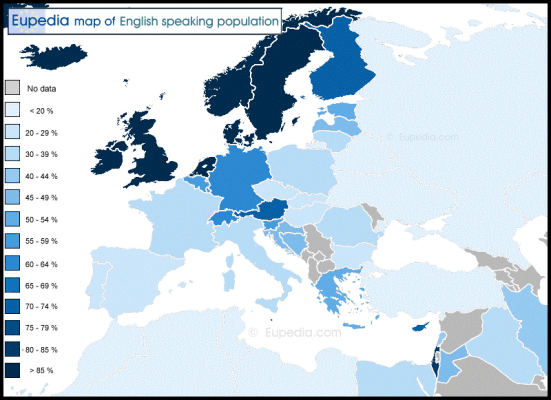
Image from Eupedia.com, based on data from Wikipedia.
Planning Expansion With A Staged Approach
Overall, expansion into some countries requires less effort than it does in others, suggesting that a staged approach is the best way to develop your European strategy. The following countries are advisable to begin with, given they are less costly places to test a strategy.
The United Kingdom and Ireland are natural first choices for expansion into Europe, given that they require no language translation; but don’t forget to localize your keywords, ads, website and price points!
Nordic countries (Sweden, Denmark, Norway, Finland and Iceland) and the Netherlands are ideal second-stage expansion countries. That’s because these countries have very high internet penetration rates per the ITU study, top the world in English language skills, and have thriving e-commerce economies.
Germany, Austria and Switzerland follow as third-stage countries given their good English language skills, high internet penetration rates and bustling economies. In addition to reaching the most populous European country, translating your brand and marketing messaging into German will help you to reach customers in Switzerland and Austria, too.
Keep in mind that although it is possible to market to these lower-cost, non-native English countries without translating your ads or landing pages, your conversion rates and ROI will be sub-optimal until you put in the effort to fully optimize your customer experience for each country.
The following countries are suitable for a later-stage expansion and should be approached after you have established a successful strategy with the above countries.
While France has the third largest economy in Europe, its internet penetration rate and English comprehension factors make it a more costly market to prepare for. However, an additional benefit of translating into French is that Belgium and Luxembourg, two wealthy countries, also speak French.
Italy and Spain are two of the largest European economies and most populous countries, yet they rank lower in the consideration set for European expansion given their lower English comprehension rates, lower internet penetration rates, and lower usage of the internet for the purpose of purchasing products or services (per an eMarketer study).
Keep an eye on Poland, too, which has a large population and a fast-growing economy. Consequently, the country is being recognized as an expansion target for commerce companies such as Toys R Us.
These are just a few aspects to consider when setting up a European marketing strategy; if you have additional context, ideas or lessons learned, please feel free to add your thoughts to the comments section.
Optimizing Your Search Campaigns For European Customers
Let’s continue with some search marketing nitty-gritty. Read on for best practices that you can use to set up and optimize your search campaigns to effectively target European customers.
The first step when expanding to a country that speaks another language is to translate and localize your keyword set. The best way to translate is to work with a native speaker, as this helps prevent the language, dialect and cultural nuanced artifacts that come with translation technology.
Next, localize your marketing messages; you’ll want to do this even if you are expanding into a country that shares the same language. If you have the resources, set up localized experiences for all customer touch points including your ads, landing page, website, online chat, call center and post-sales emails.
The next step involves performing keyword research relevant to the markets you are expanding into. To pull in-market data, use the Bing Ads Intelligence add-on for Microsoft Excel and select your target country using the drop-down selector in the BAI ribbon (arrow “A” in the image below).
From here, you’ll want to use the following keyword research reports (we’ll use an example product of “black dresses”).
Traffic Report (“B”). This report shows search data on how many people are searching for “black dresses,” which can help you predict how much volume you can expect for your (exact) keyword lists, rather than making a broad, top-down estimate based on marketplace data. Here is a sample traffic report for native keywords with in-market statistics for eight countries, inclusive of all device traffic:
Keyword Performance (“C”). This report shows marketplace performance data for your keyword(s) — in this case, just “black dresses” — with total impressions, clicks, cost, click-through rates (CTRs) and costs per click (CPCs). This report will even provide suggested bids broken out by match type, device type or position. Here is a sample keyword performance report, inclusive of all match types and devices:
Keyword Suggestions (“D”). This report can provide in-market native-language research to find additional relevant keywords, which is important for reaching additional customers that your 1:1 translated keyword set could otherwise miss.
Here is a sample table of data from a suggested list of keyword suggestions for Germany (“schwarzes kleid”), for exact matches inclusive of all devices. Just remember to double-check every term to be sure they are products you sell. (Note: A few columns from the normal report were omitted in this image to make this table easier to read.)
After establishing your keyword set, you’ll want to break out your new campaigns by country, which can be done a few different ways.
Creating a separate account for each country gives you the most flexibility in managing campaigns, billing and reporting, and it precludes the need to condense several campaigns or ad groups into a single each country.
Creating separate campaigns for each country still provides good optimization control, but it may create a convoluted account. If you don’t want to run multiple accounts but need multiple campaigns per country, you can use a country-code append-style system (e.g., dresses_UK, dresses_Germany).
Creating separate ad groups for each country is another method, but it lessens your ability to control budgets and hinders optimization efforts. Simply turning on country-specific targeting settings is not recommended, as it does not allow you to translate/localize your messaging and significantly reduces your ability to optimize by country.
The last step is to do your competitive research. You can search with a local lens by going to bing.com, clicking the gear icon in the top right, and selecting “Settings” from the drop-down menu. From there, click the “Worldwide” tab and select the country for which you want to do research.
Search for your branded, category and top products, and take notes on the ads that appear to help you position your marketing messaging, looking for ad copy call-to-action, product pricing, shipping costs and density of competitors (or lack thereof).
Please feel free to share and comment if you have additional tips or lessons learned. Happy optimizing!
I want to conclude by giving a big thank you to the following European Experts who contributed advice: Marius Hals, Jesper Riedel, Milka Kramer, Leslie Fons, Ellen Akkerman, Maedhbh Bradley, and Massimo Guerrato.
Contributing authors are invited to create content for Search Engine Land and are chosen for their expertise and contribution to the search community. Our contributors work under the oversight of the editorial staff and contributions are checked for quality and relevance to our readers. The opinions they express are their own.
Related stories
New on Search Engine Land

